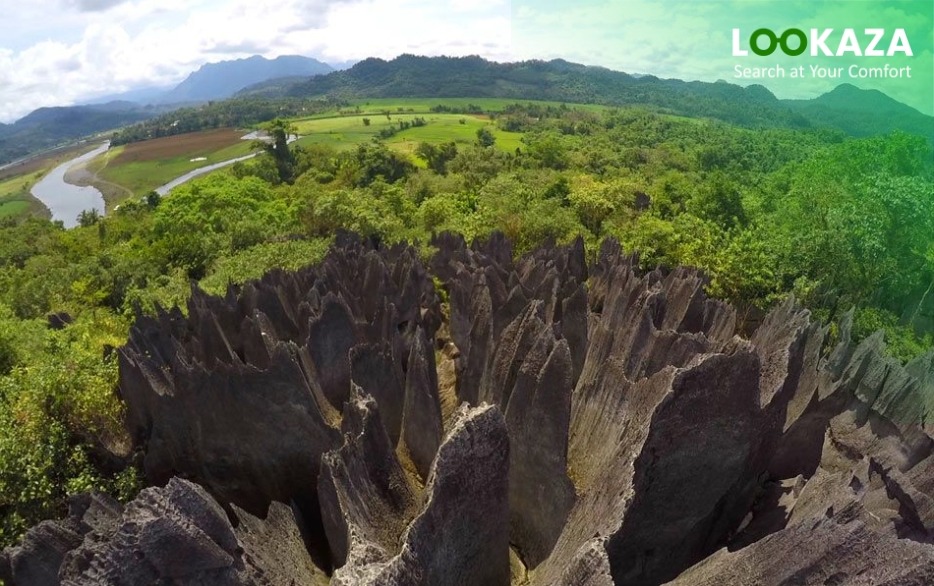Apayao, officially known as the Province of Apayao (Ilocano: Probinsia ti Apayao; Itawit: Provinsiya ya Apayao; Filipino: Lalawigan ng Apayao), is a landlocked province located in the Cordillera Administrative Region of Luzon, Philippines. Its capital is Kabugao, and the provincial capitol, along with associated offices, is situated at the New Government Center in Luna.
Apayao shares its borders with Cagayan to the north and east, Abra and Ilocos Norte to the west, and Kalinga to the south. Before 1995, Kalinga and Apayao were part of a single province called Kalinga-Apayao, but they were separated to better address the unique needs of each ethnic group.
Despite covering an area of 4,413.35 square kilometers (1,704.00 square miles), Apayao has a relatively small population, with 124,366 residents as of the 2020 census. This makes it the least densely populated province in the Philippines.
Demographics
- Age Groups and Populations:
- The age group with the highest population in Apayao was individuals aged 5 to 9, totaling 12,776 individuals.
- The age group with the lowest population was those aged 75 to 79, which included 1,184 individuals.
- Age Group Aggregates:
- When grouping age categories:
- Those aged 14 and below, including infants, babies, children, and young adolescents/teenagers, constituted approximately 31.60% of the total population, amounting to 37,660 individuals.
- The age group of 15 to 64, representing the economically active population and potential workforce, made up a significant 63.24% of the population, totaling 75,368 individuals.
- The old dependent population, consisting of senior citizens aged 65 and over, accounted for 5.17% of the total population, equivalent to 6,156 individuals.
- When grouping age categories:
- Age Dependency Ratios:
- The calculated Age Dependency Ratios provide insights into the population’s dependency on different age groups:
- For every 100 individuals in the working age population, there were 50 youth dependents (aged 14 and below) and 8 aged/senior citizens (aged 65 and over).
- In total, there were 58 dependents (combining young and old-age) for every 100 of the working population.
- The calculated Age Dependency Ratios provide insights into the population’s dependency on different age groups:
- Median Age:
- The median age of Apayao in 2015 was 24 years. This statistic indicates that half of the population was younger than 24, while the other half was older than 24. It provides an essential measure of the age distribution within the province.
These statistics offer a comprehensive overview of the age distribution and dependency ratios in Apayao as of 2015. Please keep in mind that demographic data can change over time due to various factors, such as birth rates, migration, and aging populations, so more recent data may reveal different patterns.
| Name | City/ Municipality | Population (2020) | Population (2015) | Annual Population Growth Rate (2015‑2020) | Area (km2) | Density (2020), per km2 | Brgy count |
|---|---|---|---|---|---|---|---|
| Calanasan | municipality | 12,550 | 12,604 | -0.09% | 1,256.15 | 10 | 18 |
| Conner | municipality | 27,552 | 26,051 | 1.19% | 694.30 | 40 | 21 |
| Flora | municipality | 17,944 | 17,391 | 0.66% | 413.38 | 43 | 16 |
| Kabugao | municipality, capital | 16,215 | 15,537 | 0.90% | 935.12 | 17 | 21 |
| Luna | municipality | 21,297 | 19,063 | 2.36% | 606.04 | 35 | 22 |
| Pudtol | municipality | 15,491 | 14,925 | 0.79% | 401.02 | 39 | 22 |
| Santa Marcela | municipality | 13,317 | 13,613 | -0.46% | 196.32 | 68 | 13 |
| Apayao Total | 124,366 | 119,184 | 0.90% | 4,502.33 | 28 | 133 | |
Economy
| Fiscal Year | Annual Regular Income | Change |
|---|---|---|
| 2009 | 419,184,517.00 | – |
| 2010 | 448,057,286.66 | 6.89% |
| 2011 | 487,464,677.33 | 8.80% |
| 2012 | 475,475,508.35 | -2.46% |
| 2013 | 522,630,672.34 | 9.92% |
| 2014 | 593,558,719.26 | 13.57% |
| 2015 | 695,590,101.94 | 17.19% |
| 2016 | 766,420,462.94 | 10.18% |
| End notes:Annual Regular Income = Locally Sourced Revenue + Internal Revenue Allotment (IRA) Current Year + Other Shares from National Tax CollectionLocally Sourced Revenue = Real Property Tax (General Fund) + Tax on Business + Other Taxes + Regulatory Fees + Service/User Charges + Receipts from Economic Enterprises | ||
Tourism
For those seeking an escape into nature, Apayao offers a wealth of attractions. The province is known for its lush forests, pristine rivers, and breathtaking waterfalls. One must-visit destination is the Lussok Crystal Cave, a captivating underground wonder that enchants visitors with its stunning crystal formations.
Apayao’s indigenous communities offer a unique opportunity for cultural immersion. Visitors can engage in traditional rituals, sample local cuisine, and experience the warm hospitality of the locals. The province celebrates various festivals, such as the Isneg New Year, showcasing its vibrant cultural heritage.





